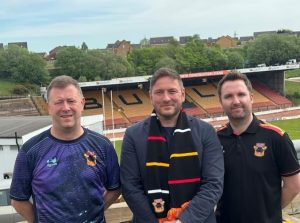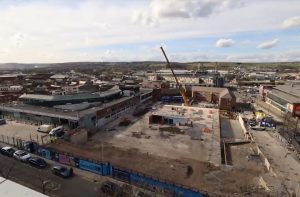Transport expert calls for more clarity on HS3 plans

INVESTMENT in transport under the HS3 banner is a great opportunity, but it is now vital to clarify to Government what schemes the project involves and how it will be funded, according to an industry expert.
In October, plans for the high-speed “HS3” rail link in the North, which could see journey times from Manchester to Leeds cut from 48 to 26 minutes, moved a step closer after a report by the chairman of HS2 Limited, Sir David Higgins, was published. The report outlined that HS3 would provide faster direct routes across the Pennines between Liverpool and Hull as part of a package of measures to dramatically improve East-West connectivity as a catalyst to drive productivity growth in the region.
Sir David said broad options have been examined from a new dedicated high speed track involving the construction of a tunnel underneath the Pennines to an upgrade of an existing line using existing but unused tunnels.
Paul Hirst, head of transport at law firm Addleshaw Goddard, said although the outline of the plan is good news, the next phase is to define exactly what HS3 is so that it can be taken from the drawing board to a practical plan.
“It is important that there is a clear understanding of what investments are needed to deliver HS3 – the aim is to deliver an interconnected North and make the network HS2 ready. However, until the next phase of work is completed, we don’t know what the plan actually involves and, importantly, what Government is being asked to fund,” he said.
He added that there is a unique opportunity to address the key connectivity issues and channel funds into the North but there is a lot to do to develop a detailed scope and funding plan to make the proposals a reality.
One of the main questions Hirst raised was how the project, including the infrastructure upgrades and new rolling stock, will be funded.
“A funding package should be developed in parallel with working up the detail of the proposals so that a deliverable package can be presented as soon as practicable” he said. “The plans are rightly ambitious – but that means there is likely to be a need for innovation in developing funding proposals that can deliver the upgrades to the required timescales – one interesting question is the role private capital could play in any overall solution.
“The sooner the funding proposals are in place the better and the more likely it will then be that these proposals will make it from aspiration to reality.”
Hirst said that the establishment of Transport for the North – the new transport body which has been described by Sir David as a local body to enable the North to speak as one voice – with a clear mandate is also crucial to expedite the process and facilitate collaboration.
“We await the next One North report with anticipation which will hopefully respond to the HS2 report with a clear statement of what it wants under the banner of HS3,” Hirst said.
“In parallel, we need a funding structure that matches the ambition and exploits any opportunities that arise to accelerate delivery wherever possible.”







